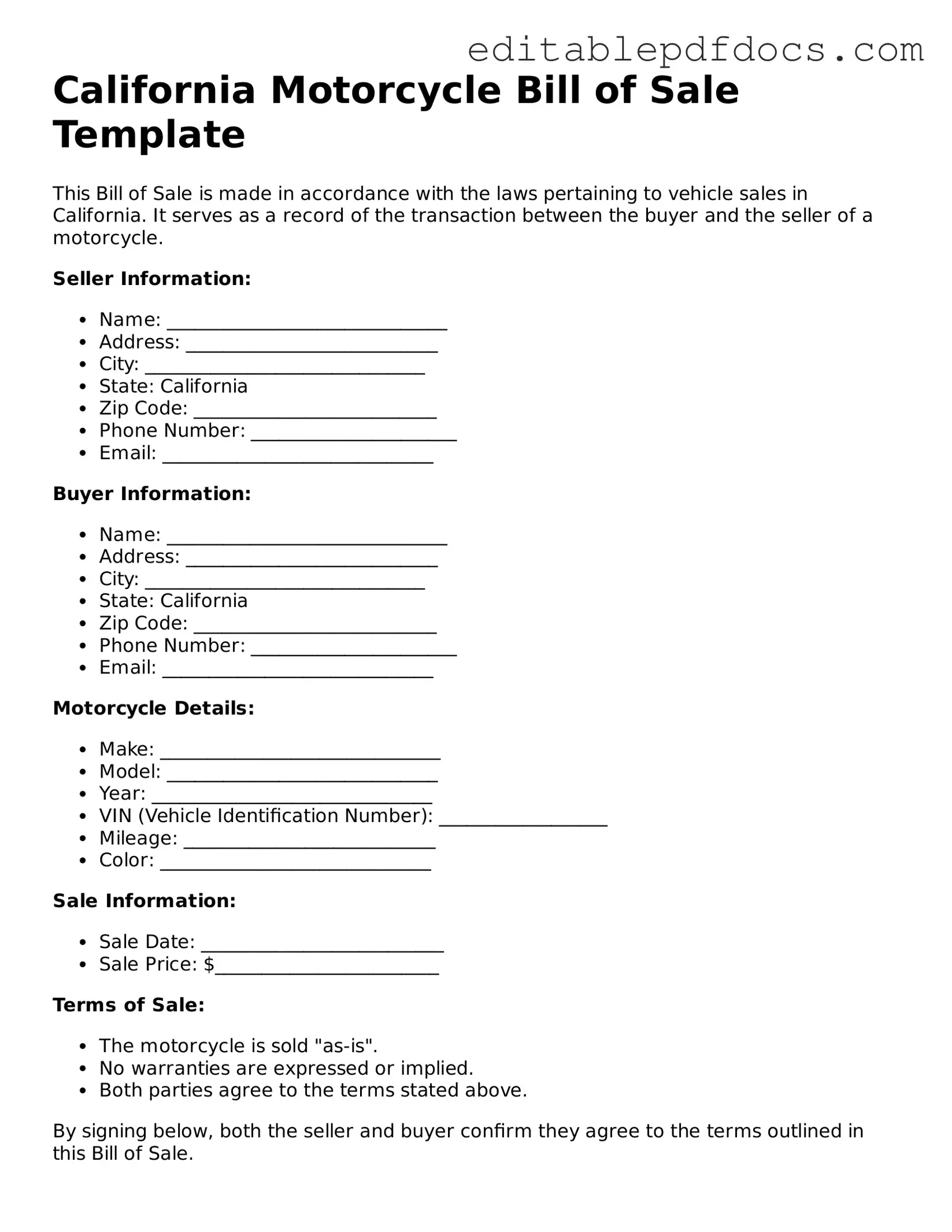Motorcycle Bill of Sale Document for California
The California Motorcycle Bill of Sale form is a crucial document that serves as proof of the transfer of ownership for a motorcycle. This form outlines important details such as the buyer and seller's information, motorcycle specifications, and sale price. Completing this form is essential for ensuring a smooth transaction and protecting both parties involved.
Ready to fill out your Motorcycle Bill of Sale? Click the button below to get started.
Open Editor Now
